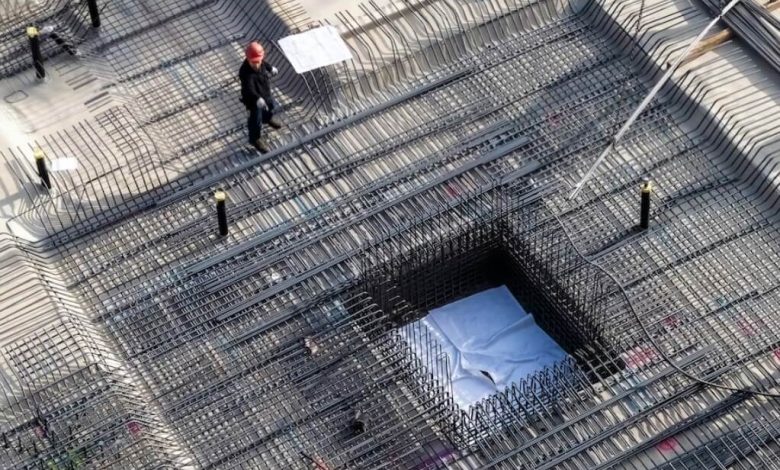Hyperconverged Infrastructure Best Practices

Today, many companies that have their own data centers are interested in upgrading their infrastructure. One of the most profitable options is the Hyperconverged Infrastructure. It’s about bringing all your digital data to one place.
Hyperconverged Infrastructure can help you streamline your business data. It works as a pod where all of your data-related tasks are being handled in a smooth way.
It makes accessing the data a lot easier. It also helps make it secure. Since many businesses are employing this method, we encourage you to do the same. Using this system is very easy. In today’s article, we are going to give you some best practices that you can employ for your business’s Hyperconverged Infrastructure. Let’s start.
Safety and Security Arrangements of Hyperconverged Infrastructure
When dealing with sensitive data, companies should be serious about protecting it. In particular, this applies to the moments when any updates take place in the data centers. Thus, here is what you should take care of:
- Ensuring protection from internal sources of danger. Even though data centers have employees who know how to work with sensitive information, you still need to take care not to give absolutely all employees the full package of privileges. Access should be provided in such a way that each employee can perform their clearly defined tasks;
- All components should be protected. This innovative solution differs from the traditional one in that 3 main components are combined. Many may think that they need to provide protection in the aggregate. However, attackers are constantly modifying their methods. Thus, it doesn’t hurt to protect each of the components, since hackers can target each of them. If hackers can get through your protection, then all components will be at risk. If each of the components has its own protection, then you will be able to detect the attack in time to prevent a total failure;
- Data backup and disaster recovery. Loss or theft of data is the worst-case scenario that employees can expect. That is why HCI vendors must provide companies with reliable backup options as well as fast ways to restore data in case of emergency;
- Take advantage of multi-layered protection. One level of protection may not be enough, even if you protect all components individually. You can sleep peacefully if you resort to setting up multi-level protection. Such protection should apply not only to hardware but also to software.
Preparing for the transition to a new infrastructure
Moving on to something new is never easy. Especially, this applies to the process of transition to a new infrastructure for the data center. In doing this, the specialists will have to deal with moving all VMs from one platform to another.
When performing a staged move, specialists will need to do a certain part of the work with each of the VMs.
In total, each of them will require two stages of movement. The first step is the storage move, and the second step is the compute move. This shouldn’t be too difficult, as the technology vendors provide all the tools needed to do this.
The next step is preparation for changing the physical environment. This is an easier stage compared to the previous one, but specialists should take it no less seriously.
They need to make sure that there is enough space for installing infrastructure nodes. The next step is to provide power as well as cooling.
Managing new infrastructure and workloads
At first glance, it may seem that to prepare for the management of a new infrastructure, employees may need to upgrade their skills and learn additional information. However, this issue is much simpler.
The advantage of HCI is that generalists can manage this architecture.
If earlier you used the traditional infrastructure, where each task requires specialists who are experts in specific areas, now this can be avoided.
Your data center specialists will be ready to manage the new infrastructure. The process of learning new things is inevitable, but there will be nothing difficult in this.
The main difficulty may lie in the placement of workloads. First of all, each company should understand what workloads the new architecture is ideal for.
This can be understood not only by specialists but also by innovative solution providers. They understand all the intricacies of the infrastructure and can help to correctly place workloads.
Increasing resources individually
Since, unlike traditional infrastructure, the new infrastructure offers the integration of all resources and all components, specialists may have questions about how the process of increasing capacity will occur.
It is logical to think that if scaling is necessary, all resources will receive more power.
However, companies do not always need to increase the capacity of both resources, both computing, and storage. While all vendors offer similar solutions at their core, they may offer different features.
One of the distinguishing features may be that companies will be able to increase the capacity of any required resource separately from another.
If more computing resources are needed, then companies will be able to add new nodes for this. In the same way, it is possible to increase the power of the second resource without changing the first one. This point should be considered when deciding on the choice of a supplier.
Training
While the new solution could make data center operations much easier, employees still need to go through a learning process.
If earlier, supporting the traditional infrastructure, each component was handled by a separate team, then in the new conditions this will no longer be required. Under the new circumstances, teams will be able to work together and thus need to focus on work strategies rather than routine tasks that everyone is used to doing.
Conclusion
The process of deploying a new Hyperconverged Infrastructure in a data center can be fairly painless if you carefully prepare for it and choose a reliable provider.
When moving to HCI, companies need to think about security, prepare for the migration process, learn how to manage workloads, and also take into account the possibility of increasing the capacity of resources.
Frequently Asked Questions (FAQs):
What is the abbreviation of Hypercoverged Infrastructure?
The abbreviation of Hyerconverged Infrastructure is “HCI”.
Is this infrastructure a must for a business?
No. It’s not a must for a business unless your business deals with a lot of digital data each day.
Is this system safe?
Yes. This system can be safe if you apply the right security methods to it.
Is using this system cheap?
The cost of this system of this system is a complex thing. We recommend you do your own research about this. In this way, you can understand what it will cost you for your business.
Can this infrastructure system work for a long time?
Yes. If you apply it to your business the right way, it can work for a long time.





